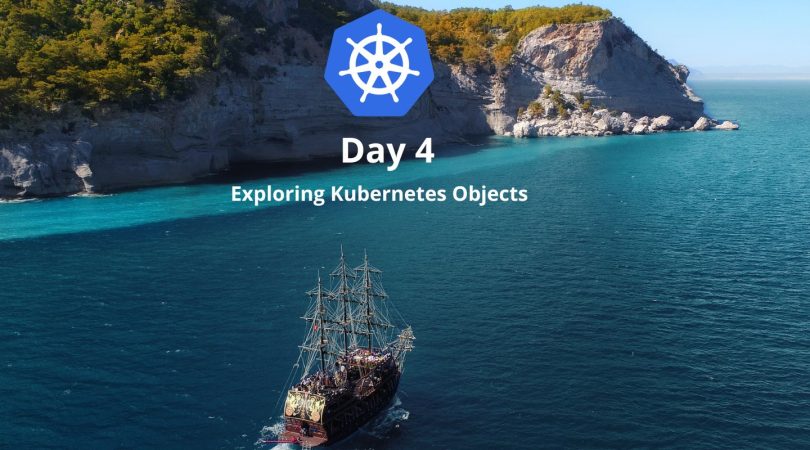Kubernetes objects are the building blocks of a Kubernetes deployment.
They are used to define the desired state of the application, including its properties, configuration, and behavior. Kubernetes objects are defined using YAML files and can be created, updated, or deleted using kubectl commands.
There are many different types of Kubernetes objects, including pods, services, deployments, and more. In this tutorial, we will focus on pods, services, and deployments, which are the most commonly used objects in Kubernetes deployments.
Understanding Pods
A pod is a smallest and simplest unit in the Kubernetes object model.
It represents a single instance of a running process in a cluster. A pod can contain one or more containers that share the same network namespace and can communicate with each other using localhost.
Pods are often used to run a single microservice, but they can also be used to run multiple microservices that work together as a single application. Pods are designed to be ephemeral and can be easily replaced or scaled up or down as needed.
Creating and Managing Pods
To create a pod, we need to define its properties and configuration using a YAML file. Here is an example YAML file that defines a simple pod with a single container:
apiVersion: v1
kind: Pod
metadata:
name: my-pod
spec:
containers:
- name: my-container
image: nginx
ports:
- containerPort: 80
To create the pod, we can use the following kubectl command:
kubectl apply -f pod.yaml
This will create a new pod with the properties and configuration defined in the YAML file. We can view the status of the pod using the following command:
kubectl get podsThis will display a list of all the pods running in the cluster, including the one we just created.
To update a pod, we can edit the YAML file and apply the changes using the same kubectl command:
kubectl apply -f pod.yaml
To delete a pod, we can use the following command:
kubectl delete pod my-podUnderstanding Services
A service is a Kubernetes object that provides a stable IP address and DNS name for a set of pods. It allows other pods and external users to access the pods using a single, stable endpoint. A service can be used to load balance traffic across multiple pods and to provide a single point of entry to the application.
Creating and Managing Services
To create a service, we need to define its properties and configuration using a YAML file. Here is an example YAML file that defines a simple service that targets the pods with the label “app=example”:
apiVersion: v1
kind: Service
metadata:
name: my-service
spec:
selector:
app: example
ports:
- name: http
port: 80
targetPort: 80
type: ClusterIPTo create the service, we can use the following kubectl command:
kubectl apply -f service.yamlThis will create a new service with the properties and configuration defined in the YAML file. We can view the status of the service using the following command:
kubectl get services
This will display a list of all the services running in the cluster, including the one we just created.
To update a service, we can edit the YAML file and apply the changes using the same kubectl command:
kubectl apply -f service.yamlTo delete a service, we can use the following command:
kubectl delete service my-serviceUnderstanding Deployments
A deployment is a Kubernetes object that manages a set of identical pods, ensuring that the desired number of replicas are running at all times. Deployments are used to manage the lifecycle of a group of pods, allowing us to scale up or down, roll out updates, and roll back changes if necessary.
Creating and Managing Deployments
To create a deployment, we need to define its properties and configuration using a YAML file. Here is an example YAML file that defines a simple deployment with two replicas:
apiVersion: apps/v1
kind: Deployment
metadata:
name: my-deployment
spec:
replicas: 2
selector:
matchLabels:
app: example
template:
metadata:
labels:
app: example
spec:
containers:
- name: my-container
image: nginx
ports:
- containerPort: 80To create the deployment, we can use the following kubectl command:
kubectl apply -f deployment.yamlThis will create a new deployment with the properties and configuration defined in the YAML file. We can view the status of the deployment using the following command:
kubectl get deploymentsThis will display a list of all the deployments running in the cluster, including the one we just created.
To update a deployment, we can edit the YAML file and apply the changes using the same kubectl command:
kubectl apply -f deployment.yaml/This will create a new replica set with the updated configuration and gradually replace the old pods with the new ones.
To scale deployment, we can use the following command:
kubectl scale deployment my-deployment --replicas=3This will scale the deployment to three replicas.
To delete a deployment, we can use the following command:
kubectl delete deployment my-deploymentThis will delete the deployment and all of its associated pods and replica sets.
Best Practices for Working with Kubernetes Objects
When working with Kubernetes objects, it’s important to follow some best practices to ensure the reliability and scalability of the deployment:
- Always use descriptive names for your objects to make them easy to identify and manage.
- Use labels and selectors to group and manage related objects, such as pods and services.
- Write YAML files to define your objects and keep them under version control using a tool like Git.
- Add namespaces to organize and isolate different environments or applications in your cluster.
- Always do health checks, such as liveness and readiness probes, to ensure that your pods are running correctly and ready to receive traffic.
- Very important to use rolling updates to gradually deploy updates to your deployment and minimize downtime.
Conclusion
In this post, we explored Kubernetes objects such as pods, services, and deployments.
We learned about their importance in Kubernetes deployments, how they relate to each other, and how to create, update, and delete them using kubectl and YAML files.
We also covered best practices for working with Kubernetes objects.
By following these best practices and understanding how to use Kubernetes objects effectively, you can create reliable and scalable deployments that can easily adapt to changing business needs.









